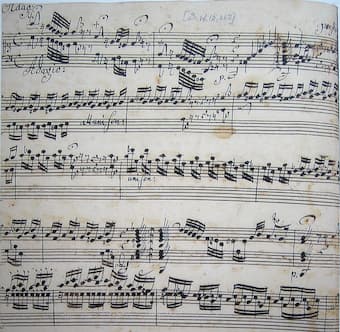Bradley Cooper and British actress, Carey Mulligan, star in the new Netflix biopic about the legendary American conductor and composer, Leonard Bernstein.
Directed by and starring Bradley Cooper as the maestro himself, the film is set to hit Netflix in 2023. Alongside Cooper is Carey Mulligan who plays the conductor’s wife, stage and TV actor Felicia Montealegre Cohn Bernstein.
Fans of the streaming service have had an exclusive first look at Cooper and Mulligan in their biopic roles with images released on Netflix’s social media pages yesterday afternoon.
Here are the first stills of Cooper and Mulligan from the upcoming Netflix production portraying the ‘American classical music wonder boy’ and his star actress wife....

Born on 28 August 1918, Leonard Bernstein married Chilean-American TV and stage actor, Felicia Cohn Montealegre, in 1951.
Though a somewhat unsettled marriage due to Bernstein’s well-documented homosexuality, there was a strong love between the two artists, making their connection much more than a relationship of convenience, despite their individual sexual preferences.
The couple had three children together; Jamie, Alexander and Nina.
In an interview with Classic FM, Jamie Bernstein was quick to correct the description of the new netflix film saying, “It’s not a biopic, strictly speaking, it doesn’t tell the story of Leonard Bernstein from birth to death – it’s not that kind of a film at all.
“In fact, it’s a portrait of our parents’ marriage. It’s about something very specific and very personal for [my siblings and I].
“We’re really struck by the fact that this was the aspect of the story that Bradley decided to focus in on and we’re very excited about Carey Mulligan as our mother Felicia; I promise you she is going to send it to the moon in a rocket.”

Montealegre was aware of Bernstein’s sexuality, and in a letter shortly after their marriage in 1951 she wrote, “If I seemed sad as you drove away today it was not because I felt in any way deserted but because I was left alone to face myself and this whole bloody mess which is our ‘connubial’ life.
“I’ve done a lot of thinking and have decided that it’s not such a mess after all. First: we are not committed to a life sentence – nothing is really irrevocable, not even marriage (though I used to think so). Second: you are a homosexual and may never change – you don’t admit to the possibility of a double life, but if your peace of mind, your health, your whole nervous system depends on a certain sexual pattern what can you do? Third: I am willing to accept you as you are, without being a martyr or sacrificing myself on the L.B. altar. (I happen to love you very much—this may be a disease and if it is what better cure?) Let’s try and see what happens if you are free to do as you like, but without guilt and confession, please!
“The feelings you have for me will be clearer and easier to express—our marriage is not based on passion but on tenderness and mutual respect.”

The film follows Bernstein across multiple decades, and fans are already excited to see Cooper’s visual similarity in the photographs of the actor’s portrayal of the conductor at an older age.
“If this is Bradley Cooper, the makeup artist should get an Oscar,” one Facebook commenter noted.
Another said, “It’s more than the makeup, it’s the posture, the gesture, the way he holds his cigarette.”

We’re just as excited as the Facebook comments section to see what Cooper will bring to this role of the beloved American artist.
With a due date yet to be announced, but the film expected next year, we’re sure that something’s coming... something good.







 Eventually Rodrigo was awarded the “Conde de Cartagena Scholarhip” allowing him to join his wife in Paris. Victoria gave up her career as a pianist to devote all her efforts to the works of her husband, collaborating with him in musical and literary matters. When the scholarship was initially renewed, the couple decided to spend some time in Germany. However, with the outbreak of the Spanish Civil War in 1936, the scholarship fund was no longer available and they had to find refuge at the Institute for the Blind in Freiburg. Three years of extended hardship finally came to an end in 1939, and Rodrigo completed his most famous composition, the Conceirto de Aranjuez. Victoria writes that shorty after the premiere of the concerto on 9 November 1940, their daughter Cecilia was born. “And what about her eyes?” Victoria asked weakly. “They’re magnificent, blue.”
Eventually Rodrigo was awarded the “Conde de Cartagena Scholarhip” allowing him to join his wife in Paris. Victoria gave up her career as a pianist to devote all her efforts to the works of her husband, collaborating with him in musical and literary matters. When the scholarship was initially renewed, the couple decided to spend some time in Germany. However, with the outbreak of the Spanish Civil War in 1936, the scholarship fund was no longer available and they had to find refuge at the Institute for the Blind in Freiburg. Three years of extended hardship finally came to an end in 1939, and Rodrigo completed his most famous composition, the Conceirto de Aranjuez. Victoria writes that shorty after the premiere of the concerto on 9 November 1940, their daughter Cecilia was born. “And what about her eyes?” Victoria asked weakly. “They’re magnificent, blue.”











